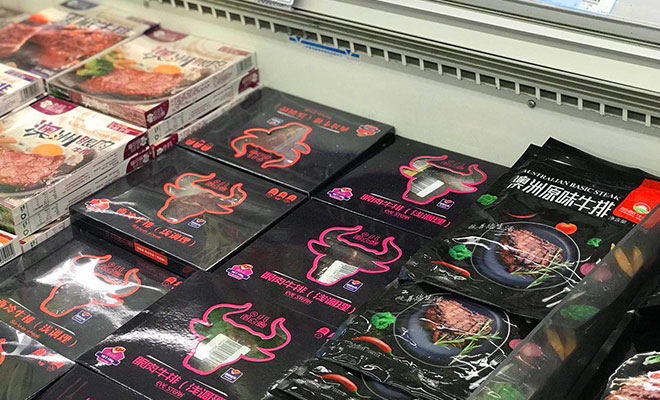Among other Western delicacies such as red wine, cigars, cheese and chocolate, beef is fast becoming a staple for China’s middle-upper class. Demand has always been present in China for beef, however, prices have always been just too high.
So with China relaxing its international ban on beef imports, countries from far and wide have stood poised and ready. To name a few, the United States, Italy, Brazil and Mexico are jumping over each other to get a slice of the Chinese market.
1,726 Australian cattle “to be slaughtered” arrived earlier this week at Jiangsu’s Lianyungang port, to the northeast of Nanjing. As reported by the Yangtze Evening Post, this is the first batch to have been imported at this port. As it stands, China gives Australia permission to export livestock, which the country is utilising to boost its beef export industry.
Taking into account the time it takes via sea to arrive, and the strict procedure involved with slaughter, Nanjing and Liangyungang customs have introduced a “single window” to help smooth out such importing formalities. This is intended to reduce retention time and the risk of transportation problems. Lianyungang customs has also arranged for clearance personnel to travel directly to the ship to “achieve zero wait time for beef cattle upon landing”.
Just as with industries the world over, concern among beefy Aussies has been how to keep the Chinese market interested in their products or services. According to The People’s Daily Online, over the last 2 years Brazil, Uruguay, New Zealand, Canada and other countries have “squeezed the market share of Australian beef in China”, due mainly to price advantages. In order to combat this and stay on top, Australia has been busy exploring what options it has available to it; one such being the import of live cattle.
“Australia is very well recognised as being a reliable and safe supply of beef to world markets. We are in the Asian region; it’s many shipping days closer to the market. Our disease-free status for our beef in Australia makes it very acceptable to consumers in the Chinese market”, Tony Eyres, Australia’s Senior Investment Specialist for the Resources and Energy sectors told The People’s Daily Online.
The 2001 ban on Italian beef was a national concern for safety, however, in recent years, Beijing has reconsidered that decision after an official inspection visit to Italian meat producers.
“After 16 years, we’ll export quality Italian beef to China again…After the end of the ban on pork last year and on oranges in early 2017, we have overcome another historic hurdle”, Agriculture Minister Maurizio Martina told Swedish newspaper The Local.
Elsewhere, China and Canada have begun exporting frozen/chilled beef and pork to China from Canadian farms. As Canada’s second-largest trading partner, local exports to China include not only beef but soy beans, canola oil and dried peas, according to Meat+Poultry.











